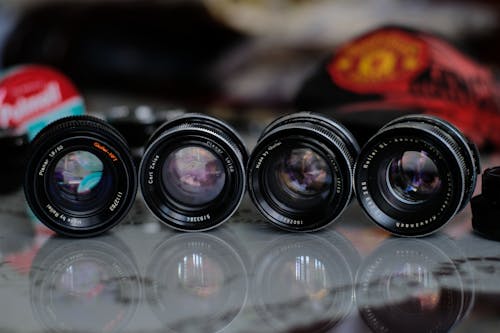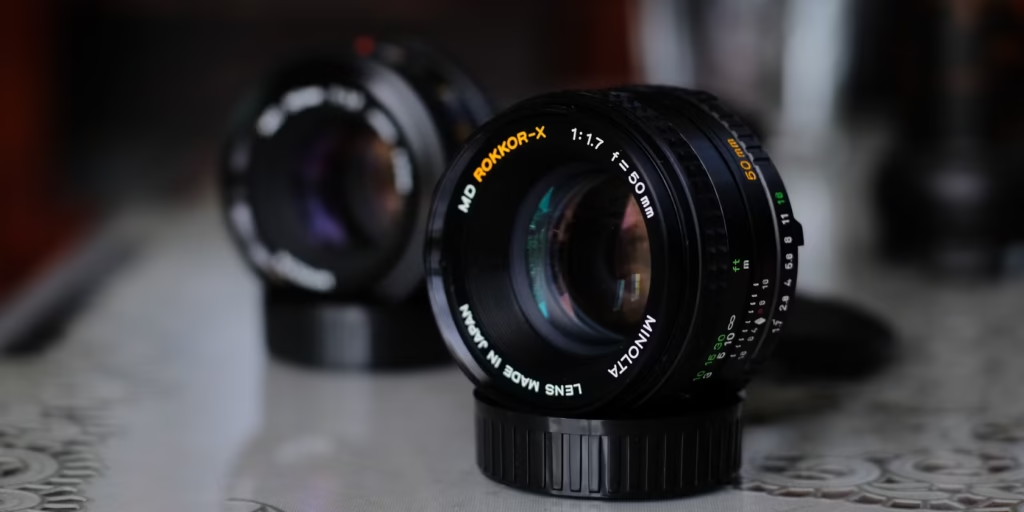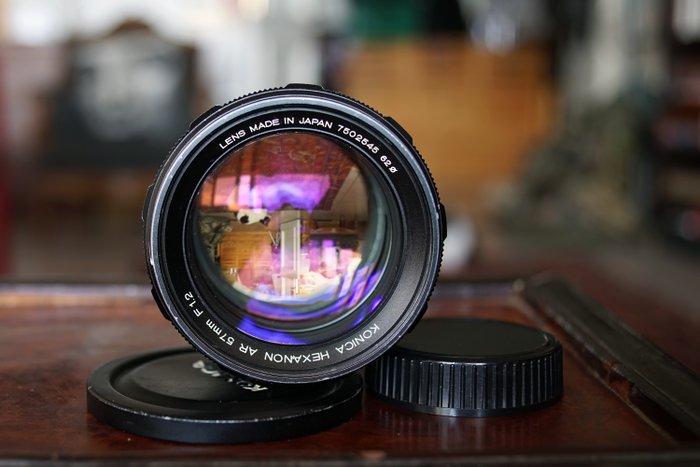
What is a Prime Lens?
A prime lens is a type of camera lens that has a fixed focal length, meaning it doesn’t zoom in or out. Unlike zoom lenses, which allow you to change the framing and magnification of your shot, prime lenses are limited to a specific focal length. For example, a 50mm prime lens will always give you the same perspective, and you’ll have to physically move closer or further from your subject to adjust the composition.
Prime lenses are designed with simplicity in mind, offering fewer moving parts and focusing purely on the optical quality of the glass. This results in a lens that typically delivers sharper images, more vibrant colors, and faster aperture speeds than zoom lenses.
Key Features of Prime Lenses:
- Fixed focal length: As mentioned, prime lenses feature a fixed focal length. This means you can’t zoom in or out, which encourages more deliberate and creative compositions.
- Wide aperture: Many prime lenses have wide maximum apertures (such as f/1.4, f/1.8, or f/2.8) that allow more light into the camera. This makes them great for photographing in low light and achieving that dreamy, shallow depth of field that separates your subject from the background.
- Sharper image quality: Because of their simpler construction, prime lenses produce sharper images than zoom lenses. Since there are fewer optical elements inside the lens, there’s less chance of distortion, chromatic aberration, or image softness.
- Compact and lightweight: Prime lenses are typically smaller and lighter than zoom lenses, making them easier to carry and ideal for street photography, travel, or any situation where portability is important.

Advantages of Using a Prime Lens:
Better image quality: Prime lenses often produce better image quality due to their simpler design. With fewer glass elements and a fixed focal length, they typically deliver crisper, more vibrant photos with less distortion than zoom lenses.
Faster aperture: Prime lenses are often built with larger apertures, allowing you to shoot in low light conditions and create a beautifully blurred background (bokeh). This is perfect for portrait photography where subject isolation is important.
More creative control: Since prime lenses don’t have zoom capability, you’re encouraged to move around to find the perfect composition. This can lead to more thoughtful and creative photography as you become more intentional with your composition and angles.
Affordable: While some high-end prime lenses can be expensive, many offer a more budget-friendly option than zoom lenses with similar image quality, making them a great choice for beginners.
Common Prime Lens Focal Lengths:
35mm: Often preferred by street photographers and documentary photographers, the 35mm prime lens is wide enough for environmental shots but not so wide that it distorts subjects. It’s a versatile lens for everyday photography.
50mm: Known as the “nifty fifty,” the 50mm prime lens is one of the most common and affordable lenses, and it works well for portraits, food photography, and general use. It mimics the natural perspective of the human eye, making it a great all-around lens.
85mm: The 85mm prime lens is a favorite for portrait photographers because of its ability to create flattering subject isolation. Its long focal length provides excellent compression and a beautiful bokeh effect.
135mm: This lens is ideal for more distant subjects like wildlife or sports photography. The longer focal length gives you a tighter field of view, helping you capture details without disturbing your subject.
When Should You Use a Prime Lens?
Prime lenses are perfect for specific situations where you need maximum image quality, fast aperture, and portability. Here are a few scenarios where a prime lens shines:
- Portrait Photography: A wide aperture prime lens, such as an 85mm f/1.8, helps create sharp focus on the subject with a creamy, blurred background.
- Low-Light Conditions: Due to their larger aperture, prime lenses are great for low-light settings like indoor events, concerts, or night photography.
- Travel and Street Photography: The compact size and simplicity of prime lenses make them excellent for travel photography or when you want to be discreet in street photography.
- Creative Compositions: Since you can’t zoom, you must move around your subject to capture different angles and perspectives, which often leads to more creative and intentional shots.
Prime Lenses vs. Zoom Lenses:
- While prime lenses offer better image quality, they have their limitations compared to zoom lenses. Zoom lenses offer flexibility, allowing you to change the focal length without moving your body. This can be especially useful in dynamic situations where you don’t have the luxury of physically adjusting your position.
- However, prime lenses have some major advantages over zooms:
- Better optical performance
- Larger apertures for low light and shallow depth of field
- Smaller and lighter
Conclusion
Prime lenses offer a unique and rewarding experience for photographers, providing exceptional image quality and creative control. While they may not offer the versatility of zoom lenses, their fixed focal length encourages you to think differently about composition and subject framing. Whether you’re looking to improve your portrait work, take great shots in low light, or reduce the weight of your camera gear, a prime lens can be an excellent addition to your photography toolkit.
By understanding the strengths and features of prime lenses, you’ll be better equipped to make informed decisions about which lens best suits your style and photography needs.


I’ve been enjoying games that balance luck and strategy, and Super Ace Jili really hits the mark with its engaging features and vibrant visuals. It’s a great pick for mindful play!
Online gambling requires a secure and trustworthy platform. With winph, players can enjoy a wide range of games like slots and live dealers, all backed by strong security and a user-friendly experience.
From a probabilistic standpoint, platforms like SuperPH blend entertainment with risk-offering diverse games but always favoring the house edge in the long run.
Great breakdown! For those diving into PH987’s world, the PH987 login app offers a secure and thrilling gateway to top-tier slots and live games. Worth checking out!
Solid points! Understanding game mechanics and account security is huge – often overlooked. Building that foundational knowledge, like with jljlph login, can really elevate your overall strategy & responsible play. Great article!
Interesting points about risk assessment in roulette! It’s fascinating how psychological triggers impact player behavior – similar to what SZ777 casino login focuses on with user engagement & streamlined registration. Understanding both sides is key!
Roulette’s allure is fascinating – the probabilities are deceptively simple, yet mastery requires real strategy. Seeing platforms like Plus777 game emphasize analytical tools is smart; understanding mechanics is key to informed play! It’s more than just luck.